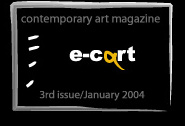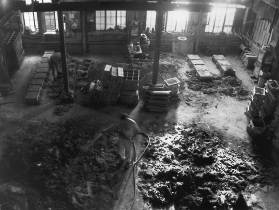|
|
|
|||||||||||||||||||||||||||||||||||||
|
|
 |
|
|
|||||||||||||||||||||||||||||||||||
|
|
 |
 |
 |
|
|
|||||||||||||||||||||||||||||||||
 |
 |
 |
|
|||||||||||||||||||||||||||||||||||
 |
|
|
||||||||||||||||||||||||||||||||||||
|
|
|
|||||||||||||||||||||||||||||||||||||
|
|
 |
|
|
|||||||||||||||||||||||||||||||||||
|
|
|
|||||||||||||||||||||||||||||||||||||
|
|
 |
|
|
|||||||||||||||||||||||||||||||||||
|
|
 |
|
|
|||||||||||||||||||||||||||||||||||
|
|
 |
 |
|
|||||||||||||||||||||||||||||||||||
|
|
|
|||||||||||||||||||||||||||||||||||||
|
|
|
|
|
|
|
|||||||||||||||||||||||||||||||||
|
|
|
|
||||||||||||||||||||||||||||||||||||
| |
|
|
||||||||||||||||||||||||||||||||||||
|
|
|
|||||||||||||||||||||||||||||||||||||
|
|
 |
 |
|
|||||||||||||||||||||||||||||||||||
| |
|
|||||||||||||||||||||||||||||||||||||
|
|
|
|
||||||||||||||||||||||||||||||||||||
|
|
|
|||||||||||||||||||||||||||||||||||||
 |
|
|||||||||||||||||||||||||||||||||||||
|
|
 |
|
 |
|
|
|||||||||||||||||||||||||||||||||
|
|
 |
|
 |
|
|
 |
|
 |
 |
|
||||||||||||||||||||||||||||
|
|
|
|
||||||||||||||||||||||||||||||||||||
|
|
 |
|
 |
|
||||||||||||||||||||||||||||||||||
 |
 |
|
||||||||||||||||||||||||||||||||||||
|
|
|
|||||||||||||||||||||||||||||||||||||
|
|
|
|
|
|
|
|||||||||||||||||||||||||||||||||
|
|
|
|||||||||||||||||||||||||||||||||||||
|
|
|
|
|
|
|
|
|
|
|
|
|
|
|
|
|
|
|
|
|
|
|
|
|
|
|
|
|
|
|
|
|
|
|
|
|
|
|
|
There is no such thing as post-industrial heritage in Romania - although,
paradoxically, there is a post-industrial patrimony.
In this country, there is no concept of "re-using" the national
post-industrial heritage either, although, paradoxically, industrial giants
are covering large areas in most of the Romanian cities. And there are no
documentary studies on these deserted and more and more ramshackle buildings;
no projects to develop at least a possible story on recovering - from the
national, cultural perspective - the depressing apartment buildings that break
the landscape's horizons or give some more sordidness to the urban view.
So, we still have to bear depressing post-industrial images on and on.
To think objectively, in a constructive manner about the former post-industrial
works and present metal offal is a quite difficult thing to do because, sometimes,
our mind is getting bleak, overwhelmed by other wastes also real, present
and gigantic. First of all, it's about the physical repulsion rendered by
paying attention to things that have generated intellectual dysentery in the
near past. The communist ideology seems to be embodied by these heaps of scrap
iron and simply the sight of them unleashes an instinctive reaction of rejection.
On the other hand, even considering this first level stoically passed, there
is a particular Romanian atmosphere that suffocates from the very beginning
any intention of cultural, patrimonial recovering of these abandoned cemeteries.
Bureaucracy, finances, mediocrity, corruption, nepotism - possibly politics?!
- etc.
A bit of emotional detachment and all of these might sound like a story or
a gossip.
Otherwise, a positive perspective, cause from this point of view the situation
doesn't look that painful anymore. It sounds to me like a novel on a spiritual
drama: pages of anxiety, apathy, invented and unsolved complexes. An exhausted,
soften hysteria, overwhelmed by suicidal thoughts therefore I guess that rather
then a writer, the story of the national post-industrial cultural heritage
of Romania would need a psychologist and Xanax.
In the alcove, where everything is mentally more natural and healthier (and
that is because things are presented in their true colors) some are considering
the aesthetical exploitation of the national post-industrial heritage in a
way which I find romantic. We are talking about an unofficial action that
obviously won't push the Romanian post-industrial patrimony to the official
top of the national heritage land. And this is very romantic since it is based
on a non-conformist idea that dashes heroically into sordid places; suicidal
mission financially speaking, because, obviously, it will not get us not even
a trace of a treasure; obviously a waste of time since is exists only for
art's sake and it doesn't aims to any acknowledgement from the authorities.
We are talking about a series of non-documentary photographs of the foundry-works
from the former "Apaca" factory. A long trip, not necessarily pleasant,
to the suburbs of the Romanian capital in order to take some black and white
"atmosphere-pictures". In the halls. The halls - former foundries
of maximum productivity, where three or four men are still working for an
employer who owns a garden-furniture business. And where several students
from the sculpture department of the Art University create their works that
are going to be cast in bronze.
This could be a brief history of the building and its equipment. But the photographs
don't document the story and don't investigate the situation either.
They are just images of a huge, hot, dusty, rusty and deserted place. And
of a grey atmosphere. Very grey - as grey as only these photographs on a very
high quality paper could bear; as grey as only this format - not small, not
big - could suggest; as grey as the object-photograph only - by its appearance,
its odour, its materiality - could tell.
I find this thing to be very romantic. … palpable photographs, objects
loaded with one of the most trivial and sad stories: grey atmosphere, dirty
windows, over-used rubber, several years old propagandistic posters and the
story of some feelings of safety and trust towards some faces of famous politicians.
Somehow, these are things belonging to the antiques-shop, to the curiosities
laboratory that preserves the image of an époque that had no idea about
the high-tech, post-modernism or virtual realities. Nostalgia and lots and
lots of good literature. For instance, the series of the four photographs
having a plaster Venus as a subject, graceful as ever, but also with a little
too much of a belly, this series is, at least in my eyes, the climax of the
whole narration. Pre-eminently the symbol of Fine Arts and Humanism, Venus-Aphrodite
has a story of her own too: rendered in dialogue with the mobile and the still
objects in the hall, but also with her author, the statue seems to be perfectly
integrated into context and perfectly ready to become a piece of garden-furniture.
Sordid, sad and fascinating is this chapter too, the one that tells us the
kitsch story of Venus. Loisir, connaisseurs. Bon gout. This is where Dip's
photographs are leading me to.
Playful-ironical, typically post-modernist vision on the near past, ego-others,
modern-post-modern, topical-revolute - several terms to put into the critical
equation of a typical, elitist and ultimate article on these photographs.
But, since there is no need to subject the material to the critical-theoretical,
deconstructive tortures, we will stick to fatidically and harshly continuing
the story of the "atmosphere photographs" in black and white.
Since they haven't been taken for documentary purposes or for some exam in
the National University of Arts in Bucharest (where the author attends his
third year of study), the photographs won't be exhibited - neither in the
University, nor in private galleries. They will remain in their envelope till
another occasion of conversation and gossip discussions on the post-industrial
Romanian heritage and the way in which it is or it is not culturally and aesthetically
capitalized will show up.
…Still, I do believe in the romantic side of this vision of the rusty
and deserted cemetery from the "Apaca" works. Especially because
it is likely to remain an unique type of photographs in Romanian Art, since
these closed works and factories become storehouses, while their equipments
turn into scrap iron.
Ina Cazan
Translated by Alis Vasile
|
|
|
|||||||||||||||||||||||||||||||||||||
|
|
 |
|
|
|||||||||||||||||||||||||||||||||||
|
|
 |
 |
 |
|
|
|||||||||||||||||||||||||||||||||
 |
 |
 |
|
|||||||||||||||||||||||||||||||||||
 |
|
|
||||||||||||||||||||||||||||||||||||
|
|
|
|||||||||||||||||||||||||||||||||||||
|
|
 |
|
|
|||||||||||||||||||||||||||||||||||
|
|
|
|||||||||||||||||||||||||||||||||||||
|
|
 |
|
|
|||||||||||||||||||||||||||||||||||
|
|
 |
|
|
|||||||||||||||||||||||||||||||||||
|
|
 |
 |
|
|||||||||||||||||||||||||||||||||||
|
|
|
|||||||||||||||||||||||||||||||||||||
|
|
|
|
|
|
|
|||||||||||||||||||||||||||||||||
|
|
|
|
||||||||||||||||||||||||||||||||||||
| |
|
|
||||||||||||||||||||||||||||||||||||
|
|
|
|||||||||||||||||||||||||||||||||||||
|
|
 |
 |
|
|||||||||||||||||||||||||||||||||||
| |
|
|||||||||||||||||||||||||||||||||||||
|
|
|
|
||||||||||||||||||||||||||||||||||||
|
|
|
|||||||||||||||||||||||||||||||||||||
 |
|
|||||||||||||||||||||||||||||||||||||
|
|
 |
|
 |
|
|
|||||||||||||||||||||||||||||||||
|
|
 |
|
 |
|
|
 |
|
 |
 |
|
||||||||||||||||||||||||||||
|
|
|
|
||||||||||||||||||||||||||||||||||||
|
|
 |
|
 |
|
||||||||||||||||||||||||||||||||||
 |
 |
|
||||||||||||||||||||||||||||||||||||
|
|
|
|||||||||||||||||||||||||||||||||||||
|
|
|
|
|
|
|
|||||||||||||||||||||||||||||||||
|
|
|
|||||||||||||||||||||||||||||||||||||
|
|
|
|
|
|
|
|
|
|
|
|
|
|
|
|
|
|
|
|
|
|
|
|
|
|
|
|
|
|
|
|
|
|
|
|
|
|
|
|